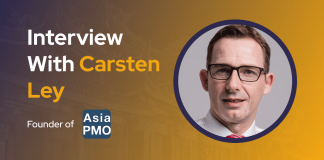Hi Kristen, tell us about yourself and your background and how you got to the CX space?
My background is mostly in product management and marketing. I got into CX when Nu Skin (my former employer) added the goal of being “customer-obsessed” to their docket. At that point, they asked me to take on the role of heading up the new CX discipline and department for the company. Because of my background in marketing and product management, which requires many of the foundational skills of good CX (like strong customer empathy and value delivery), I jumped at the chance.
Also, I attended a workshop where Dr. Gal Zauberman from Yale University taught an Experience Design class. At the time, I wasn’t familiar with the academic discipline and the clinical research being done in this area. He taught us about studies that describe how the human mind moves through, and judges, an experience. When he told us about the key places in experiences where emotional peaks can create a 400% lift in customer enjoyment, I was hooked. I went home, dove into the literature, and started building a plan to apply good experience design to the Nu Skin customer journey.
Since then, I’ve been working to teach and apply the principles from CX research to my real-world products, events, digital content, etc.
Online commerce was booming in 2020, and so did consumer reviews – How can brands better utilize this data to improve their customers’ experience?
I see many brands spending resources collecting reviews well, but very few are maximizing that data for good. I would recommend that review data end up in two places:
- Dig into the data – the bad, and especially the good.
- In the hands of the teams who affect the customer’s experience across all the key touchpoints (product development, eCommerce, fulfillment, etc.). Some groups are actually afraid of seeing this data, or they only look at the negative reviews. That’s a mistake. Journey-owners need to understand what is working, and how to optimize that moment as much as they need to learn what to fix. In fact, experience science tells us that smoothing the rough patches are a nice-to-have, but really pushing your great moments is what creates true emotional brand-bonding and customer satisfaction in the long run.
- Shout them from the rooftops:
- Particularly in an all-online world, customers lean on each other’s reviews to replace the in-store shopping experience. Brands need to make this data easily accessible to quell nerves about purchasing—what used to be done by a sales clerk in a store. AND, if a brand has great reviews, they should be advertising those. I really like what Pura Fragrances is doing with its social ads. They are running a series of very clean ads showing animated videos with their diffusers and single testimonials from a real customer (AND they stay on the screen long enough to read the whole thing). And, I actually read every one, because I know they are from a real customer. So simple, yet so effective. This makes me feel good about my purchase and like I’m part of a larger community of real people, not just buying from a cold, corporate engine.
In your POV – What is the ultimate checklist for a good customer experience strategy?
- Know WHO you are serving and what matters to them.
- How old are they? Where do they come from? What matters to them? So, many companies, even mature companies, don’t take the time to tightly define their target customer/s. And everything in experience design becomes mushy if you don’t know who you are serving and what their needs are.
- Understand your decision points.
- There are really only a few places in a journey (even a complex one) where your customer is making a decision to either go forward, or drop out. If you know where those are, you save time and frustration for both the company and the customer spending energy on touchpoints that DON’T matter as much. Also, understanding experience science well enough to know where the human mind assessed the journey and make sure you are pushing value, surprise, and emotional relevance at those KEY points.
- Surprises and Synapses.
- Without novelty, you are missing the most important piece of experience design. One of the things I keep coming back to in my training is how the human mind experiences peaks in a journey. And if there isn’t surprise and delight in that journey, your customers will not experience the emotional peak that bonds them to your brand, drives decision points, and keeps them coming back. Surprise can even create new synaptic paths through the brain, further increasing your customer’s bond with your brand.
- Now, not everyone is great at applying the “surprise” in a way that makes sense to the brand, the customer, or the P&L, but that is where the magic is. And if you only have time to do ONE thing to help your experience, add a surprise value to the final moment of the journey. But, like a good plot twist, in order to really work, your customers CAN NOT see it coming.
How much has the role of customer experience changed in the social distancing era – what role digital transformation has in this crisis?
Absolutely digital experience has become more important. I see it shifting in three key ways:
- Speed
-
- Forcing extra clicks, long sign-ups, or sitting and waiting for transactions to process or pages to load, is a customer-killer. With so many online options, people just won’t tolerate friction in their buying journeys anymore.
- Authenticity:
- I know this has been talked about ad-nauseum for the last few years, but now we are seeing it actually take root. Companies AND individuals are showing what makes them real and authentic in their online content and messaging and people are hungry for that kind of real connection. Whether it’s “how-to” videos from the CEO’s kitchen or a video showing people packing a single order from start to finish in a warehouse, authentic content is key.
- Recreating the face-to-face in a digital world:
- I’m continually amazed at how businesses are trading out what used to be considered “mandatory” face-to-face interactions for a newly-invented online experience. For example, I just reordered contacts from an online provider. As I went to place the order, they informed me that my prescription had expired. Well, rather than force an office visit (which they would have done before the lockdown), they offered an online exam. I jumped at the chance. In ten minutes, my exam was done and my contacts were on their way. NOW, they had to get creative both from understanding the science around a wizard-based eye exam that could be accurate and not mess up people’s prescriptions, but also how to make it easy enough for the customer to not hate the process. Without the need, they would not have taken the time to create this kind of wizard. And now, they can leverage it into the future.
What was the biggest lesson you learned in 2020?
Wow. That’s a big question. I think that most people are adaptable and flexible and good problem solvers. In terms of customer experience, I absolutely learned that understanding experience science and key decision-points really does matter, and every company, organization, even family can benefit from understanding how good experience craftsmanship can make even difficult times more enjoyable.
2020 was the year of webinars and online events; what was your favorite one?
Well, I’m totally biased, but OF COURSE, the Young Living Virtual Global Convention (the company I work for) was my favorite. Not only because I know and love the teams that created it, but because of the creative problem solving and experience design that went into moving from a stadium and convention-center-based event with over 30,000 in-person attendees to an all-digital broadcast. The biggest question, was how do we build real connection and culture with our members in an arms-length digital format?
Just one of the initiatives the team did to help answer that question was to lean into humor to not only create the all-important “surprise” at key moments in the broadcast but to also create a shared lexicon or “private joke” to build community. To help do this we worked with an agency to create a series of video segments using funny recurring characters (Mother Nature & Daisy) in an “Office” type scenario to introduce our new products and keep our customers engaged during a long day of broadcast. Not only did the videos sell the products (our convention sales were up 175% YOY), but it created a cultural lexicon for our members. We all shared in the “private joke” if you will, and we also saw them sharing on social media and they asked for more. This kind of content is not typical for Direct Selling, but it was so effective, we brought Mother Nature & Daisy back again and again. And I love it when I see our members post memes that come from this series like, “Techonolcy hurts my feelings.” Watch the series and you’ll see what I mean.
Adjusting to Work-From-Home environment
It looks like working from home is going to stay with us for the foreseeable future. How should Executives gear up to the changing times?
I think applying experience science principles to our work teams is key as well. Online call after online call after online call can be draining and not beneficial to work relationships. Throwing in a contest where appropriate, or just spending time chatting about non-work topics can really help. Also, I do think that occasional in-person meetings will be critical to keep teams cohesive in the future. Planning budget and time/space to support that kind of connection will be key. And finally, many people have more interruptions at home than in an office. So, giving people the option to go into the office is important.
Last but not least, what is your favorite CX metric?
The referred sale. Yes, I like a good NPS like the rest of the CX world, but what really says that our experience is working is when a customer loves our brand so much that they don’t just say they would prefer, but they actually do on a level of passion that convinces their friend to buy from us. That is gold.






